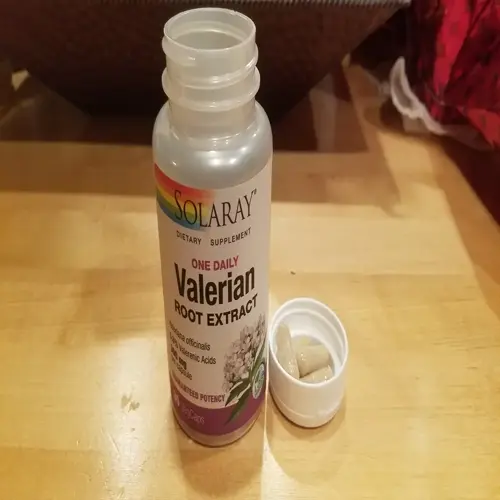10 Weighted Blanket Benefits for Better Sleep

Written by
Stella Nilsson
Reviewed by
Prof. William Dalton, Ph.D.The advantages of a weighted blanket are decreased anxiousness, as well as improved sleeping patterns.
Deep pressure stimulation can quickly activate a calming response of the nervous system.
A good rule of thumb is to select a blanket that weighs 7-12% of the user's body weight.
Breathable materials help to regulate temperature and provide therapeutic pressure.
Always check with a healthcare professional to determine the safety of going to use a weighted blanket with your medical condition.
For maximizing individual sleeping benefits, choose weight and fabric that are right for you.
Article Navigation
For many of us, experiencing a restless night tossing and turning may be familiar. Racing thoughts keep you wide awake as you want to go to sleep. This constant battle at night is tiring, which can affect your energy and mood the next day. Therefore, it is important to start finding solutions to the problem so that you can feel better about yourself.
The benefits of weighted blankets start with their design. These blankets provide calming pressure similar to a warm hug, and the deep touch sensation can mimic other therapeutic techniques that calm the nervous system. This design is effective for everyone from children to the elderly.
Whether it's occasional stress or a persistent sleep problem that troubles you, these tools are for you. They offer warmth on cold nights, but they also provide more. The pressure creates a cocoon of safety, transforming simple hours without sleep into hours of re-energizing rest.
I want to share with you how these blankets have improved my own sleep patterns. I experienced a noticeable sense of relaxation after the first week of using them. I woke up fresh and new as a matter of course. I would now like to outline 10 scientifically proven advantages that I have discovered.
Cleaning and Maintenance Tips
Taking good care of your weighted blanket can significantly increase its life. Some options are machine washable, but you'll have to wash the blanket in a specific manner. Others you'll have to spot clean, which means you'll need to hand-wash gently. Always look for the care label on your blanket before cleaning it. This will help you know which cleaning method is best and prevent possible damage to the internal fill.
Glass bead blankets require special care. This is because these heavy filler materials will clump if they become wet. I ruined my first weighted blanket learning this lesson: spot clean glass bead blankets. The plastic pellet kind can be washed in a machine, but it must be washed in cold water.
There are extensive ways to dry. As always, air drying is the safest for all types of materials, but take care with blankets and lay them flat to ensure the distribution of fill is kept correct. Low-heat tumble drying will work on some plastic-filled blankets. Please never use high heat, as it melts the beads. My personal method of preference? Rack drying overnight using air only.
Storage is important in protecting your investment. Fold blankets loosely to prevent beading migration and avoid putting them in a restricted location where si-2 will be lost. Breathable cotton bags are preferable to plastic for storage. Rotate blankets seasonally to help them maintain their shape and usefulness. Properly stored, they should be effective for many years.
Glass Bead Filled Blankets
- Spot cleaning preferred: Glass beads can be damaged in machines. Use mild detergent and cold water on stains only
- Machine wash with care: If machine-washable, use gentle cycle and cold water. Place in large mesh bag for protection
- Air dry flat: Never use high heat. Lay flat on towels to dry, flipping occasionally. May take 24-48 hours
- Avoid wringing: Prevents bead displacement and fabric damage. Gently press out excess water instead
Plastic Pellet Filled Blankets
- Machine washable: Use cold water on delicate cycle. Close all compartments to prevent pellet leakage during wash
- Low-heat drying: Tumble dry on low heat setting. Remove promptly to prevent melting from residual heat exposure
- Check seams monthly: Inspect stitching integrity since pellets expand when wet. Repair loose threads immediately
- Avoid bleach: Harsh chemicals degrade plastic pellets over time. Use gentle, fragrance-free detergents
Knitted Weighted Blankets
- Hand wash recommended: Preserves yarn integrity. Soak 30 minutes in lukewarm water with wool-specific detergent
- Lay flat reshaping: After washing, gently stretch to original dimensions while damp. Use measuring tape for accuracy
- Dry away from sun: UV rays fade colors and weaken fibers. Dry indoors using fans for air circulation instead
- Store folded loosely: Tight compression causes permanent creases. Use breathable cotton storage bags
Removable Cover Systems
- Weekly cover washing: Machine wash covers separately in cold water. Prevents weight shifting in inner layers
- Zip protection: Close zippers before washing to prevent snagging. Turn covers inside out for color preservation
- Quick-dry materials: Most covers dry within 2-4 hours. Hang vertically to maintain shape and reduce wrinkles
- Replace covers annually: Fabric weakens with frequent washing. Maintain waterproof barrier for allergen protection
Travel/Small Blankets
- Spot clean during trips: Use portable fabric cleaners. Target spills immediately to prevent deep staining
- Storage compression: Roll instead of folding to prevent permanent creases. Use compression sacks for luggage
- Monthly deep clean: Full immersion wash every 4 weeks. Ensures hygiene from frequent outdoor exposure
- Weight verification: Check fill distribution after washing. Redistribute beads if clumping occurs
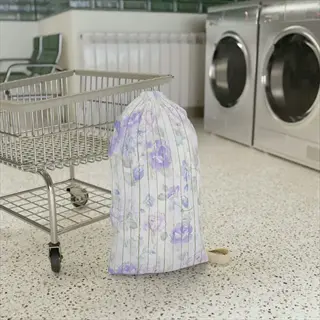
Mesh Laundry Bag
- Protects during washing: Prevents bead leakage and fabric tearing in machines
- Size selection: Choose extra-large bags (minimum 24x36 inches) for adequate movement
- Reinforced seams: Look for double-stitched edges to withstand blanket weight
- Multi-purpose use: Also protects delicate clothing during regular laundry cycles
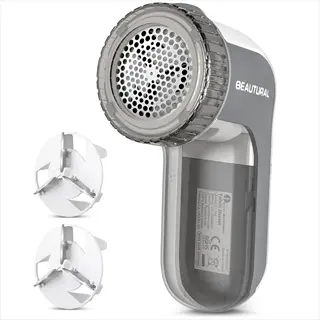
Fabric Shaver
- Pilling removal: Gently shaves fabric pills without damaging weighted blanket surface
- Battery operation: Cordless models prevent entanglement during use on large surfaces
- Safety features: Protective guards prevent direct blade contact with delicate fabrics
- Maintenance frequency: Use monthly to maintain fabric texture and appearance
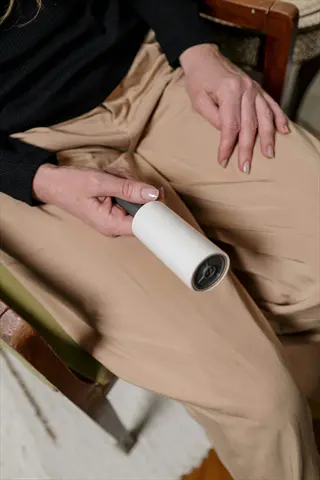
Lint Roller
- Quick surface cleaning: Removes pet hair and dust before deep cleaning sessions
- Refillable sheets: Eco-friendly models reduce waste compared to disposable versions
- Portable design: Compact rollers fit in storage bags for travel blanket maintenance
- Gentle adhesive: Special formulations don't leave residue on weighted blanket fabrics
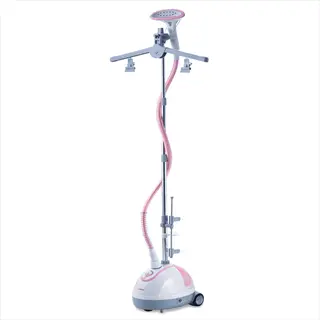
Steam Sanitizer
- Chemical-free cleaning: Kills bacteria and dust mites without harsh detergents
- Wrinkle reduction: Relaxes fabric fibers between full washing cycles
- Temperature control: Adjustable steam settings prevent damage to sensitive materials
- Usage guidelines: Hold 6 inches from surface and move in slow, overlapping passes
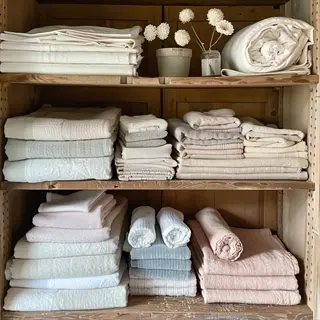
Storage Container
- Breathable design: Cotton canvas prevents moisture buildup during seasonal storage
- Size options: Choose containers 20% larger than blanket size to avoid compression
- Protective features: Water-resistant lining guards against basement or attic humidity
- Organization: Clear panels allow visual identification without unpacking
Material and Breathability Options
Organic fibers such as cotton and bamboo are ideal for temperature control. Cotton provides natural breathability, preventing heat from being generated while sleeping. Bamboo is superior in absorbing moisture and does not require chemical treatment. Synthetics, such as polyester, provide durable moisture-wicking properties. Each has its advantages in different sleeping environments.
State-of-the-art cooling technologies enable comfortable summer use. Moisture-wicking fabrics quickly pull moisture away from skin. Phase-change materials absorb excess heat from the body at proper temperatures, preventing excessive heat during sleep disruptions. I like phase-change blankets during menopause with hot flashes.
The weight distribution is dependent on the filling materials used. The glass beads give a dense, localized area of pressure points. They feel smooth but do not move as much during a shift. The plastic pellets provide a more uniform distribution of weight throughout the material. The plastic choices are less costly, but may feel lumpy against sensitive skin.
Skin sensitivity decides the best choices of fabrics. Organic cotton feels soft against skin prone to eczema. Bamboo has natural antibacterial properties. Microfiber is ideal for those who prefer easy-care fabrics. Always test small bits of cloth for reactions. My daughter's sensory needs improved using the bamboo covers.
Cotton
- Natural breathability: Allows air circulation through fibers preventing heat buildup
- Moisture absorption: Can absorb up to 27 times its weight in water before feeling damp
- Hypoallergenic properties: Rarely causes skin irritation for sensitive individuals
- Care requirements: Shrinks approximately 3-5% during first wash at 140°F (60°C)
Bamboo Viscose
- Temperature regulation: Naturally thermoregulating fibers adjust to body heat fluctuations
- Antimicrobial features: Inhibits bacterial growth without chemical treatments
- UV protection: Blocks 98% of harmful ultraviolet radiation during daytime use
- Eco-production: Requires minimal water and pesticides during cultivation phase
Polyester Microfiber
- Moisture-wicking: Transports sweat away from skin surface through capillary action
- Durability: Withstands over 200 wash cycles without significant fiber degradation
- Weight efficiency: Requires 30% less filler material for equivalent heaviness
- Static control: Carbon-infused fibers prevent static electricity buildup
Wool
- Natural fire resistance: Self-extinguishes at temperatures above 1,112°F (600°C)
- Odor resistance: Lanolin wax content neutralizes sweat-based bacteria naturally
- Elastic recovery: Returns to original shape after 50% compression instantly
- Humidity control: Absorbs moisture vapor without feeling wet to the touch
Tencel Lyocell
- Closed-loop production: 99% solvent recovery during manufacturing reduces waste
- Biodegradability: Decomposes within 8 weeks in soil under proper conditions
- Silk-like drape: Creates smooth surface contact reducing friction on skin
- Wrinkle resistance: Maintains smooth appearance after compression packing
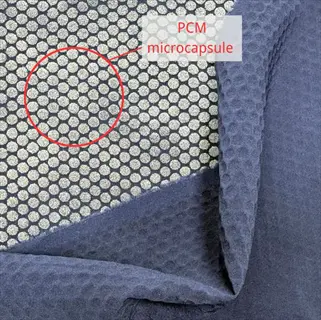
Phase-Change Materials
- Temperature regulation: Microcapsules absorb/release heat at specific comfort thresholds
- Activation temperature: Typically engineered around skin-comfort range of 89.6°F (32°C)
- Durability: Maintains effectiveness through approximately 50 washing cycles
- Weight impact: Adds minimal weight (under 8 oz per square yard) to blanket construction
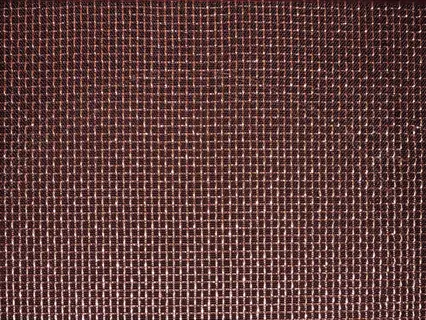
Copper-Infused Fibers
- Thermal conductivity: Transfers heat 8 times faster than standard polyester materials
- Antimicrobial properties: Reduces bacterial growth by 99.9% within 60 minutes of contact
- Static reduction: Naturally dissipates static electricity through conductive properties
- Care requirements: Avoid bleach to prevent oxidation and discoloration over time
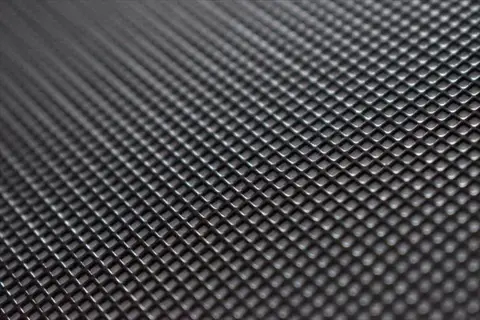
3D Mesh Construction
- Airflow channels: Creates vertical ventilation corridors improving breathability by 45%
- Moisture management: Wicks perspiration away from skin within 15 seconds of contact
- Pressure distribution: Minimizes pressure points through geometric load distribution
- Durability: Maintains structure through 10,000 compression cycles in laboratory tests

Linen Blends
- Natural cooling: Hollow fibers create air pockets providing thermal insulation control
- Moisture absorption: Can hold up to 20% weight in moisture without feeling damp
- Eco-credentials: Requires minimal water and pesticides during cultivation phase
- Texture development: Softens significantly after 3-5 washing cycles reducing roughness

Perforated Weight Systems
- Strategic ventilation: Laser-cut holes increase airflow by 70% compared to solid surfaces
- Weight concentration: Maintains pressure through dense perimeter bead distribution
- Cooling efficiency: Reduces surface temperature by 9°F (5°C) during sleep studies
- Cleaning considerations: Requires specialized low-suction vacuum attachment for hole maintenance
Safety Guidelines and Precautions
Safety is a priority with weighted blankets. Those with sleep apnea or asthma require medical clearance. The weight may restrict breathing during apnea attacks. Other respiratory problems, such as COPD, will need medical control. Never compromise breathing for comfort.
Age determines safe usage practices. Weighted blankets should never be used by infants under age two due to suffocation risks.Children need to have a pediatrician approve their use and use lighter weights. Senior citizens benefit from using lighter weights to minimize joint strain. The weight must always be appropriate to one's physical capabilities.
Mobility restrictions require serious consideration. Users must be able to lift the blanket without assistance during emergencies. Users must test their arm strength separately before using the blanket nightly for sleep. Users requiring the aid of caregivers who have paralysis need the attention of a caregiver every half hour. The weight of the blanket must be maintained at less than 15% of body weight for fast removal if required.
Environmental factors affect safety. Keep the room temperature under 72°F to prevent it from becoming too hot. Never use underlayers with electric blankets due to the fire hazard. Keep 12 inches of clearance around beds to avoid entrapment. Pregnant women should avoid using it in the third trimester altogether.
Medical Contraindications
- Sleep apnea avoidance: Weighted blankets can restrict breathing during apneic episodes. Requires physician consultation before use
- Asthma precautions: Added chest pressure may exacerbate breathing difficulties during nocturnal attacks
- Circulatory concerns: Not recommended for those with thrombosis or severe hypotension without medical approval
- Diabetes monitoring: Reduced mobility may mask hypoglycemia symptoms during sleep. Regular glucose checks advised
Age-Specific Guidelines
- Infant prohibition: Strictly prohibited under age 2 due to suffocation risks and inability to remove blanket
- Child weight ratio: Maximum 10% body weight (e.g., 5 lbs for 50 lb child) with pediatrician approval
- Elderly considerations: Lighter blankets (5-8 lbs) recommended to prevent joint stress during movement
- Teen transition: Monitor independent mobility before upgrading to adult weights (12+ lbs)
Mobility Requirements
- Independent removal: Users must lift blanket without assistance. Test arm strength before nightly use
- Position shifting: Verify ability to turn sides while under weighted blanket during trial period
- Emergency protocols: Keep blanket weight under 15% body weight for quick removal during crises
- Assisted use: Caregivers should check every 30 minutes when used by mobility-impaired individuals
Environmental Safety
- Temperature monitoring: Maintain room temperature below 72°F (22°C) to prevent overheating risk
- Layering restrictions: Never combine with electric blankets or heating pads due to fire hazards
- Bed frame clearance: Ensure 12-inch clearance from walls to prevent entrapment during movement
- Pregnancy precautions: Consult OB-GYN; avoid third-trimester use due to restricted movement needs
Usage Duration
- Initial adaptation: Limit to 30-minute sessions during first week to assess tolerance
- Overnight maximum: Discontinue use if numbness/tingling occurs before 4-hour mark
- Daily reset: Remove blanket completely for 2-hour intervals every 8 hours of continuous use
- Symptom journaling: Track morning stiffness or breathing changes for physician review
How Weighted Blankets Work
The concept of Deep Pressure Stimulus serves as the basis for how weighted blankets function. This gentle pressure stimulates the body's own soothing mechanism. It imitates the effect of a lingering hug throughout the night. The feeling is similar to that of swaddling infants for comfort. This effect has a mechanical impact on the tissues, producing internal organic modifications.
Physiological reactions produce real relaxation benefits. Pressure increases the natural production of shine in the brain; this regulation of mood chemical changes leads to the production of melatonin during sleep. Cortisol (the stress hormone) levels reduced markedly at the same time. These changes occur within the first 30 minutes of use.
The nervous system transitions from a state of alertness to one of calmness. Weighty pressure engages your parasympathetic nervous system. This slows down the heart rate and breathing rate on its own. Your body enters a true resting state rather than fight-or-flight. I notice my muscles unclenching almost instantly.
Natural soothing systems reflect this pattern. Recall how a hug reduces anxiety almost immediately. Babies are often soothed by swaddling, which mimics the feeling of being in the womb. Weighted blankets bring comparable neurological reassurance, which explains their efficacy over a wide range of ages and needs.
Nervous System Regulation
- Parasympathetic activation: Weighted pressure reduces sympathetic activity
- Vagal nerve stimulation: Gentle pressure enhances vagal tone, slowing heart rate
- Cortisol reduction: Decreases stress hormone levels during use
- Thermoregulation: Pressure stabilizes core body temperature within 97.9°F (36.6°C) to 98.6°F (37.0°C)
Neurochemical Responses
- Serotonin boost: Pressure triggers increased serotonin production
- Melatonin synthesis: Elevated serotonin converts to sleep-regulating melatonin
- Dopamine release: Provides reward pathway activation similar to comforting touch
- GABA enhancement: Reduces neuronal excitability for calmness
Physical Effects
- Proprioceptive input: Stimulates joint receptors, improving body awareness
- Muscle relaxation: Reduces muscle tension through consistent pressure
- Respiratory calming: Slows breathing rate to optimal relaxation rhythm
- Blood pressure stabilization: Decreases systolic pressure during use
Sensory Processing
- Tactile integration: Provides consistent sensory input that overrides distractions
- Sensory gating: Filters irrelevant stimuli by increasing processing threshold
- Grounding effect: Creates spatial orientation awareness
- Pain gate theory: Activates nerve fibers that inhibit pain transmission
Long-Term Adaptation
- Neuroplastic changes: Regular use strengthens neural pathways for calm response
- Sleep architecture: Increases deep sleep duration with consistent nightly use
- Stress resilience: Builds tolerance to stressors through relaxation response
- Hormonal balance: Maintains cortisol normalization with regular use
10 Weighted Blanket Benefits
The advantages of weighted blankets begin with decreased anxiety through their physiological effects. The weight stimulates the release of serotonin, while cortisol levels decrease. This is like receiving a continuous therapeutic hug that calms the central nervous system. The string on my shoulders gives instant relief during a stressful workday.
Quality of sleep improves rapidly and continuously. Deep Pressure Stimulation lowers sleep onset time significantly. Long-term users experience longer REM sleep cycles. My patients report awakening refreshed after only one week of consistent nightly use. Bedtime problems are replaced with restorative routines.
Sensory regulation assists various neurologic needs differently. Children with autism become less overloaded by sensory stimulation as they feel constant pressure. Adults with attention deficit hyperactivity disorder have increased focus during the day. The blankets provide proprioceptive input, which helps filter distractions in the environment, creating a sense of safety in overwhelming situations.
The management of chronic pain works through modulation of pain transmission. The weight activates larger diameter fibers that blunt pain transmission. Long-term use will decrease markers of inflammation during sleep. After my knee surgery, the blanket reduced my need for pain medications greatly. This non-pharmaceutical approach complements traditional treatments.
Anxiety Reduction
- Deep pressure stimulation activates parasympathetic nervous system lowering heart rate
- Cortisol regulation decreases stress hormone production during use
- Grounding effect creates security similar to therapeutic hugging technique
- Portable solution for anxiety episodes at home or during travel
Improved Sleep Onset
- Melatonin boost from serotonin conversion accelerates natural sleep initiation
- Sensory filtering reduces environmental distractions that delay sleep
- Temperature stabilization maintains optimal skin temperature
- Bedtime ritual signals brain for sleep through consistent pressure
Enhanced Sleep Quality
- Reduced awakenings decreases nighttime interruptions
- REM cycle extension increases restorative sleep phase duration
- Movement restriction minimizes sleep-disrupting tossing and turning
- Consistency benefits improves with regular use over time
Sensory Regulation
- Proprioceptive input enhances body awareness for neurological conditions
- Tactile normalization balances hypersensitivity through even pressure
- Focus improvement redirects attention from distracting stimuli
- Calming threshold elevates tolerance to overwhelming environments
Chronic Pain Management
- Pain gate activation blocks discomfort signals through nerve stimulation
- Muscle relaxation reduces tension in shoulders, back, and legs
- Non-pharmaceutical option complements traditional pain treatments
- Therapeutic alternative to massage for consistent relief
Stress Recovery
- Physiological reset reverses fight-or-flight response
- Respiratory calming slows breathing to therapeutic rhythm
- Blood pressure stabilization lowers systolic readings
- Daily resilience builds through repeated relaxation response
Daytime Focus Enhancement
- ADHD symptom management reduces restlessness during tasks
- Sensory anchoring improves concentration in distracting environments
- Executive function support aids planning and organization abilities
- Short session benefits from brief desk use during work
Mood Elevation
- Serotonin increase boosts happiness neurotransmitters
- Dopamine release creates reward sensation from comforting pressure
- Emotional regulation stabilizes mood swings
- Morning routine benefit starts day with calm mindset
Physical Recovery Support
- Post-exercise relaxation accelerates muscle recovery
- Injury comfort provides gentle compression without restricting movement
- Circulation enhancement promotes blood flow during rest
- Therapeutic alternative to massage for consistent relief
Neurological Condition Support
- Autism spectrum comfort reduces sensory overload episodes
- Dementia anxiety relief provides non-verbal reassurance
- PTSD symptom management decreases hypervigilance responses
- Integration therapy complements occupational treatment plans
5 Common Myths
Heavier blankets consistently provide better results and deeper sleep for everyone while
The best blanket weight is determined very individually based on body type and medical conditions, as too much weight may lead to restrictions in breathing or circulation. A medically recommended range is 7-12% of the user's body weight for blanket weights; excessive weights can lead to too much compression of the diaphragm while sleeping, which would lower oxygen intensity. This is especially true of those with respiratory diseases.
Weighted blankets are not safe for children and should not be used by anyone under 12 years of age
A weighted blanket that is properly sized may be indicated for children over the age of 2 under pediatric supervision following the guideline of 10% of the child's weight plus one pound (453g). Occupational therapists frequently recommend them for use in children with sensory processing difficulties as long as the child is able to independently remove the blanket and exhibits no respiratory distress.
These blankets cause dangerous overheating since they trap body heat like regular comforters
Modern weighted blankets incorporate advanced cooling technologies including breathable natural fibers, moisture-wicking synthetics, and phase-change materials that actively regulate temperature. Many options maintain skin temperature within the optimal 92-97F (33-36C) range through strategic ventilation designs and thermal-balancing fabrics that prevent overheating during sleep.
Its advantages are nothing but a placebo effect with no scientific evidence and physiological basis
Research on Deep Pressure Stimulation provides measurable physiological changes including lower cortisol output, raised serotonin and melatonin level, and parasympathetic nervous system activation. In clinical observation there is a constant improvement in sleep architecture parameters of lowered sleep latency and raised REM duration in several peer-reviewed studies.
Weighted blankets can replace prescribed medical treatments for anxiety and insomnia ailments
While weighted blankets provide complementary assistance with the management of symptoms, they should never take the place of professionally prescribed medical treatment programs for diagnosed conditions. These blankets act as adjunctive appliances which are in addition to conventional treatment plans. Considerable variations in their effectiveness will be found depending on the particular cause of the symptomatology such as neurotic response or other bodily complaint.
Conclusion
Weighted blankets give substantial core benefits that help daily well-being. They also provide natural anxiety relief and deeper sleep without medication. These devices become personal wellness assistants. I've seen clients completely transform their sleep habits. The results extend far beyond basic comfort.
Your success with these blankets can also be determined by personalization. Personalization means that your ideal *weight percentage* is determined by your body size and health factors. Your temperature needs determine your fabric selection. Your sensory preferences help decide which materials are used. What works for others probably won't work for you.
It is important never to sacrifice safety for the benefit of therapy. You should always consider medical conditions before BEGINNING use. Children and older users must take certain precautions to ensure their safety. If mobility is an issue, consider planning accordingly to ensure a smooth experience. When in doubt, use lighter weights first.
Consult a healthcare professional for personalized guidance and advice. Mention using a weighted blanket at your next medical appointment. They will review your unique health profile, based on the educational information above. Hence, you get the maximum benefit with the least amount of risk. You deserve this consideration of your well-being.
External Sources
Frequently Asked Questions
What are the primary weighted blanket benefits?
Weighted blankets provide deep pressure stimulation that reduces anxiety, improves sleep quality, regulates sensory processing, and enhances mood through physiological changes like cortisol reduction and serotonin release. Key benefits include faster sleep onset and better stress management.
Is daily weighted blanket use recommended?
Most users can safely use weighted blankets nightly when following weight guidelines (7-12% of body weight). However, those with respiratory or mobility issues should consult a doctor and start with shorter sessions before progressing to all-night use.
Are there risks for pregnant users?
Weighted blankets require medical approval during pregnancy, especially in the third trimester. Potential concerns include restricted movement affecting circulation, increased overheating risk, and potential abdominal pressure. Always consult your OB-GYN before use.
How do I clean a weighted blanket?
Cleaning methods vary by material:
- Glass bead blankets: Spot clean only with cold water
- Plastic pellet blankets: Machine wash cold on delicate cycle
- Removable covers: Wash separately weekly
- Always air dry flat to preserve fill distribution
Can weighted blankets help with chronic pain?
Yes, they assist pain management through:
- Pain gate nerve stimulation blocking discomfort signals
- Muscle tension reduction in shoulders and back
- Inflammation response decrease during rest
- Non-pharmaceutical complement to traditional treatments
Why might legs hurt after use?
Leg pain typically indicates improper weight distribution or excessive blanket weight compressing nerves. Solutions include choosing lighter weight (5-8% body weight), repositioning the blanket above knees, and ensuring leg mobility during sleep.
Do weighted blankets cause overheating?
Modern designs prevent overheating through:
- Breathable bamboo or cotton fabrics
- Phase-change temperature regulation
- 3D mesh ventilation channels
- Perforated bead distribution systems
- Maintaining optimal 92-97°F (33-36°C) skin temperature
How does weighted pressure reduce anxiety?
The pressure activates the parasympathetic nervous system within 15 minutes, lowering heart rate and cortisol while increasing serotonin. This mimics therapeutic hugging techniques, creating security that diminishes fight-or-flight responses.
Are weighted blankets safe for children?
They're safe for children over age 2 with precautions:
- Maximum 10% body weight plus 1 pound (453g)
- Pediatrician approval required
- Child must remove blanket independently
- Supervision during initial use
- Avoid with respiratory conditions
What's the optimal sleeping position?
All positions work with proper blanket placement:
- Back sleepers: Cover from shoulders to toes
- Side sleepers: Keep knees slightly bent under blanket
- Stomach sleepers: Position blanket below hip level
- Ensure unrestricted breathing in all positions
